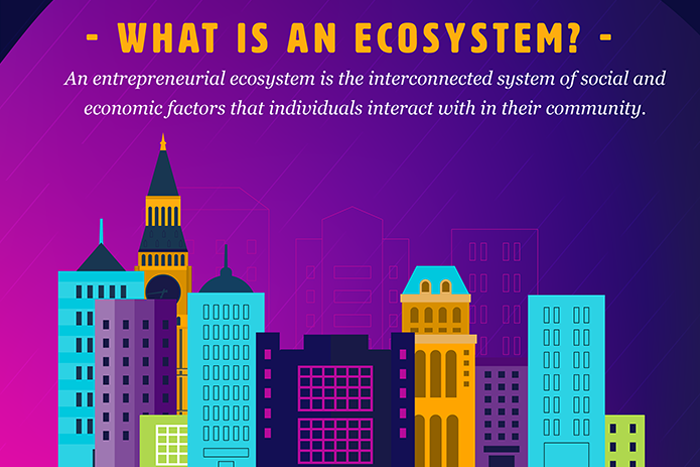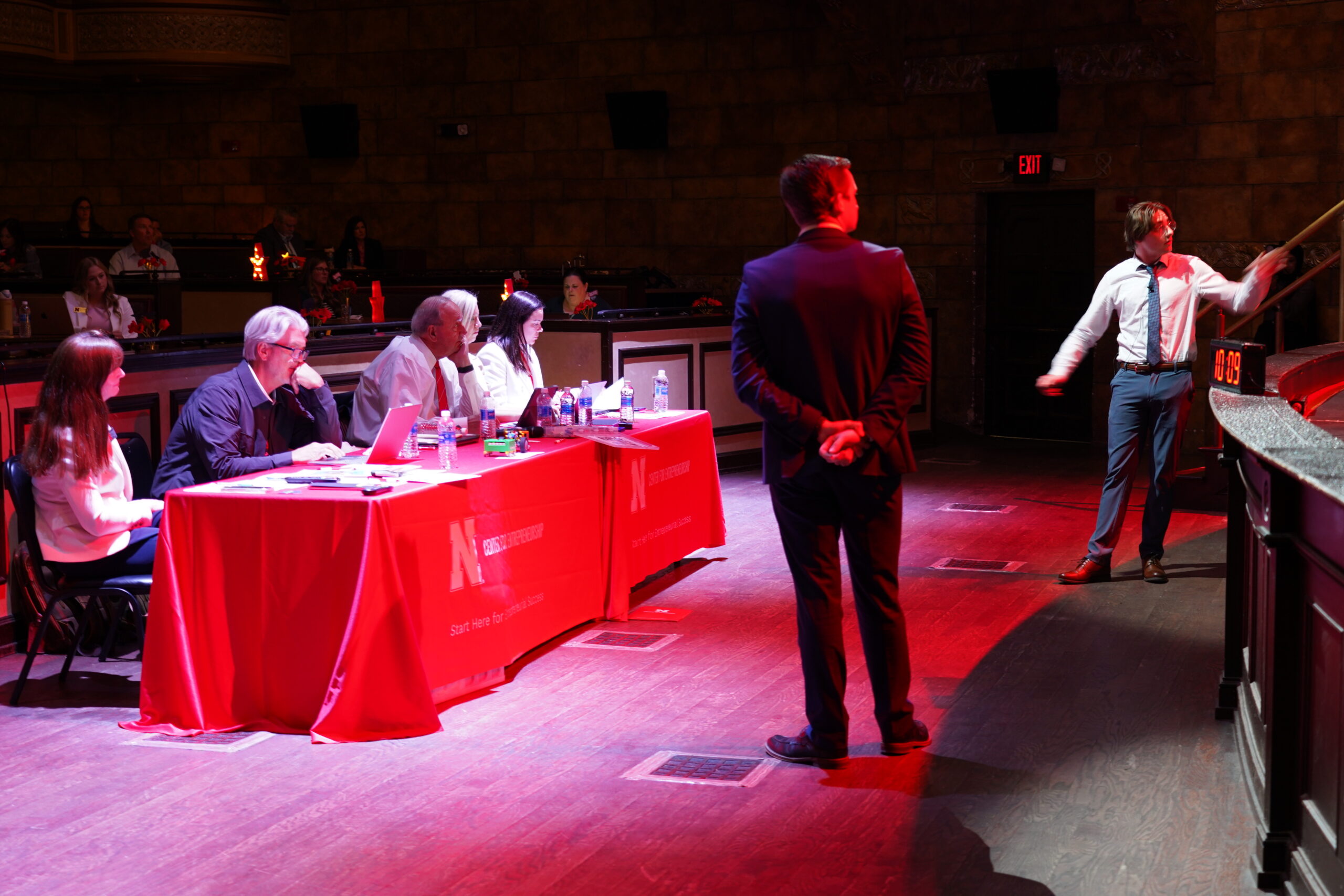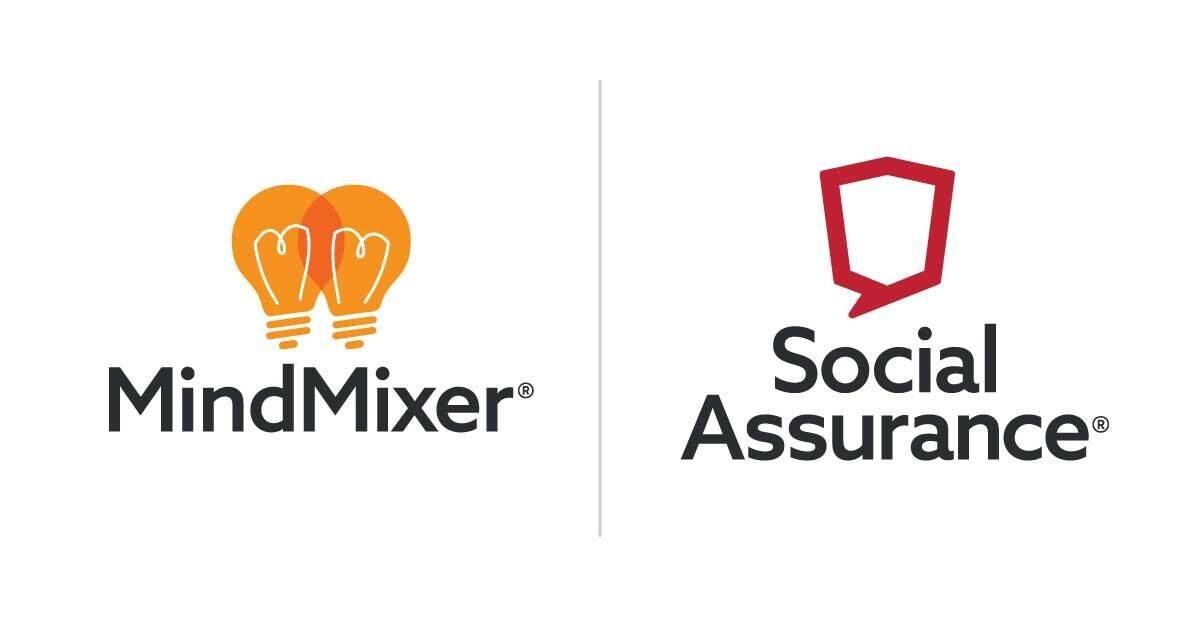“Ecosystem” and “ecosystem building” have been hot terms in the world of entrepreneurial development lately. As cities begin to realize that fostering entrepreneurship is a great economic tool for growth; new strategies are being developed to make cities more “entrepreneur-friendly.” One of the first questions community builders should be asking is how they can assess the current ecosystem to identify what resources the community is working with. This assessment can help provide context and allow community leadership to identify gaps and develop an action plan for moving forward.
One issue with ecosystem building: each community develops its own framework and set of measurements. While it’s good that cities are taking initiative, metrics would be more powerful if the organizations and individuals gathering metrics were taking more of a global approach to which metrics they were gathering. Metrics are most valuable when they can offer context to how your ecosystem is doing within normative measurements.
Without regard to this, room for vanity metrics creeps in and the story being told can be lifted up past what is accurate because the sample size tends to be too small to provide larger insights. If each community measured indicators that could be replicated in each community and shared their finding outwards, we would be able to develop stronger insights and have a better sense of context.
Another common issue is when entrepreneurial ecosystem builders leave the entrepreneur out of the conversation and they are allowed to fall out of focus. At the end of the day, no 200-point strategy can make up for a system that doesn’t serve an entrepreneur’s real needs. If the framework is a hub-and-spoke system than the entrepreneur should be placed squarely in the middle.
When organizations place themselves in the middle and act as the only access to resources they limit their entrepreneurial growth to only those entrepreneurs they have the systems to serve, causing a bottleneck in the ecosystem. It is great to create resource centers that can be touchpoints for new entrepreneurs to familiarize themselves with what is available to them but be sure you aren’t actually creating a barrier in the community as a whole by swallowing up resources and limiting access.
On a hunt for a framework I felt aligned most closely with these values, I found the ChapCo Method. Chapman and Company works with cities and ecosystems to develop strategic growth and has developed a method that cities can reference as a framework of where to begin understanding their entrepreneur ecosystems. I asked Scott Bragg, VP of Team Building at Chapman & Company, for an explanation.
“Finding entrepreneurs is our central premise because they create value where it didn’t exist previously. Then once you find them, how as a community are you supporting their individual needs? What we find more often than not is the ‘build it and they will come’ approach. The support structures are built first, and we try to fit entrepreneurs inside them rather than asking entrepreneurs what they need.”
In this model, the entrepreneurs are placed in the middle (as the hub if you will) of the ecosystem and they interact with the supporting pieces surrounding them. The spokes are split into four categories: Structure, Knowledgeable Community, Financial Capital, and Connecting Activities.
One community I have personally spent a lot of time in is Sioux Falls, SD. Sioux Falls has a metro population of around 259,000 people. Its size and my familiarity allowed it to serve as a great example to exhibit how the ChapCo Method can be applied as a framework to get started. This following example is meant to serve as a model of what a starting point might look like. It doesn’t answer the necessary questions of what the community’s mission, vision, and critical metrics are. The answers to these questions are the foundation that a strategy can be developed around to create action and activity in the community. Without the follow through in action this framework is useless.
Sioux Falls has had some success with startups but is still working to put together their resources and foster more scalable entrepreneurship activity. Recently Mayor Ten Haken declared March 6th as entrepreneurship day. I reached out to him to ask him how he perceives the measurement of the ecosystem within the community:
“The entrepreneurial ecosystem of a community is critical in determining what resources are available, what gaps exist, and what opportunities for increased collaboration can occur. Entrepreneurs can benefit greatly in growing and scaling their business by understanding the community resources available and how these resources fit into the bigger picture.”
Of course, each entrepreneur will have a different set of challenges and a unique path to achieving success. Canvasing an ecosystem will not define a guaranteed path to success. It is important for an entrepreneur to have guidance along their journey and connect with the knowledge of other members in the community.
Matt Paulson, the founder of MarketBeat and Startup Sioux Falls, states, “There is no single, clearly-defined path to follow that will make someone a successful entrepreneur, but one of the most valuable things an aspiring entrepreneur can do is get the ongoing advice of someone who’s been there and done that. Mentors can help entrepreneurs avoid common mistakes, stay on track and fully utilize the resources of the startup ecosystem.”
Matt has spent a significant amount of time working to disseminate what he has learned to those around him and also made the personal decision to start an angel fund to create more opportunity for entrepreneurs who are in need of angel capital. Recently, Matt launched Startup Sioux Falls as a resource for local entrepreneurs, stating “Our goal with Startup Sioux Falls is to create a digital hub that will make it easier for entrepreneurs to access startup resources from non-profits, state agencies and community groups. There are more than thirty different organizations that help startup founders in one way or another in Sioux Falls, but many founders don’t know about them. We’re hoping to bridge that awareness gap.”
As you consider mapping your own entrepreneurial ecosystem it is important to remember to have actionable takeaways from each discussion and to keep the people as the focus. Don’t forget that behind each metric there stands a person. Connecting that person to what they need and who they need to meet is integral to the success of any ecosystem.
John Meyer, CEO of Lemonly, Sioux Falls community champion, and an individual who was the first connection for me into the world of entrepreneurship, states: “The key to making these communities thrive is connection. The tools, resources, and buildings are just that without the people. The startup communities I admire most are the ones I visit and feel like I’ve been given the key to the city for the day. Being able to plug folks in immediately and helping drive entrepreneurs directly to the person or resource they need is vital.”
Take a look below at the Sioux Falls ecosystem example and a few tips on how to get started with measuring your ecosystem.






